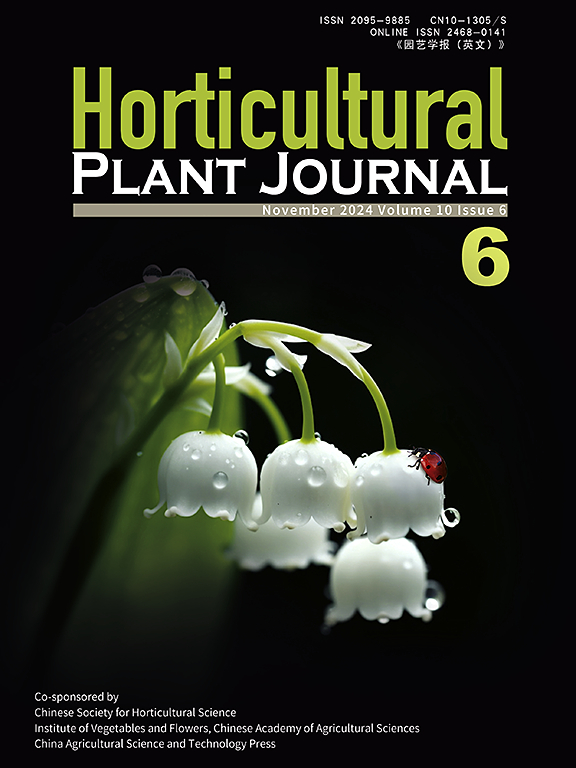Establishment of an in vivo transgenic hairy root system in strawberry for verifying the nitrate-transport activity of FaNRT1.1
IF 5.7
1区 农林科学
Q1 HORTICULTURE
引用次数: 0
Abstract
The study of strawberry gene function has been hindered by the low transformation efficiency and long generation time of transgenic plants. This study aimed to develop and optimize methods for generating strawberry (求助全文
约1分钟内获得全文
求助全文
来源期刊

Horticultural Plant Journal
Environmental Science-Ecology
CiteScore
9.60
自引率
14.00%
发文量
293
审稿时长
33 weeks
期刊介绍:
Horticultural Plant Journal (HPJ) is an OPEN ACCESS international journal. HPJ publishes research related to all horticultural plants, including fruits, vegetables, ornamental plants, tea plants, and medicinal plants, etc. The journal covers all aspects of horticultural crop sciences, including germplasm resources, genetics and breeding, tillage and cultivation, physiology and biochemistry, ecology, genomics, biotechnology, plant protection, postharvest processing, etc. Article types include Original research papers, Reviews, and Short communications.
 求助内容:
求助内容: 应助结果提醒方式:
应助结果提醒方式:


